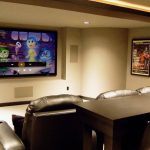MIT Invents A Flowing River of three-D Pixels That Lets Objects bring together Themselves
The Tangible Media workforce’s newest innovation might revolutionize the assembly line. this is how.
October 14, 2015
When MIT’s Tangible Media group first unveiled its shapeshifting show, the inFORM, one factor the staff brought up used to be that it had plenty of possibilities for the manufacturing and industrial sectors. With Kinetic Blocks, a practice-up of types to the inFORM, the Tangible Media staff chose to explore this potential, displaying how the conveyor-belt meeting strains of today might be changed by flowing rivers of 3-D pixels.
like the inFORM, Kinetic Blocks is a flatbed “shape show” made up of laptop-controlled pins, with a Microsoft Kinect as an overhanging eye. What has been supercharged here is the flexibility and granularity with which these pins can manipulate objects. in their video demonstration, the Tangible Media crew shows how the Kinetic Blocks platform can be utilized to stack, rotate, twist, and move blocks, with none human intervention. it may well even assemble preprogrammed constructions.
it can be actual that the original inFORM could manipulate objects to some extent. however the execution was clumsy, and it required a human operator to manipulate an object on top of the display. no longer only is Kinetic Blocks absolutely computerized and programmable, but it surely’s much, rather more speedy and correct at manipulating the objects you place inside its container. that you can also use Kinetic Blocks to record the motions of a human operator assembling one thing. this system will then analyze the human’s motions, and learn how to recreate the meeting from scratch.
As with the inFORM ahead of it, it’s important to use your creativeness just a little to look the appliance of shape displays, but if you do, that you would be able to’t unsee it. right now, assembly lines require pricey human or robot operators to gather a product. something like Kinetic Blocks may grow to be the conveyor belt of an assembly line into a robot operator. imagine vehicles or iPhones that seemingly assemble themselves as they move down the manufacturing unit line. Kinetic Blocks isn’t able to making that happen but, mostly as a result of it does not have enough pixels to finely manipulate small objects, but the concept that proves it’s possible: All we’d like is for shape displays to move Retina.
[by means of Design growth]
![]()
(78)












